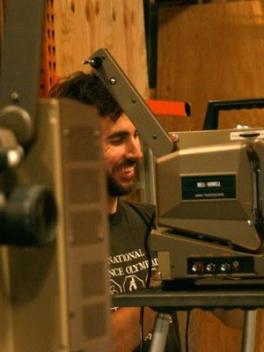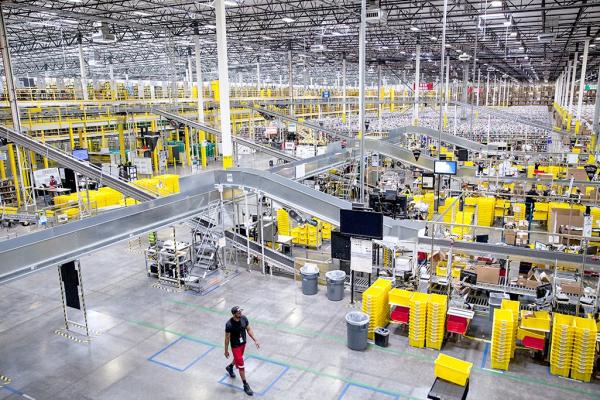Amazonia: Real Labor and the Virtual Economy

By Professor Roger Beebe, Department of Art

My experimental documentary Amazonia started with a simple question: How does the virtual economy transform real space? We think of e-commerce as being about mouse clicks and electrons cascading one way or another, but on the other end of those actions is a physical world that’s being transformed in their image. To investigate what that transformation looks like, I made multiple visits to the four cities where Amazon.com had their primary distribution centers — Campbellsville, Kentucky; Coffeyville, Kansas; Fernley, Nevada; and New Castle, Delaware — gathering images and sounds from both the warehouses and from the towns around them. While I was originally thinking that the focus of the film would be on the architectural transformations, reading off of those new forms something about the way the world at large was being reorganized, I came to understand that the cost to the environment (in the enormous amount of energy consumption required by the virtual economy) and the toll of the very physical labor in those distribution centers takes on the workers in this not-so-virtual economy.

There’s been an explosion in their labor force as they’ve dramatically expanded the number of fulfillment centers over the past decade or so, as they’ve made speed of delivery a key focus rather than just the mere convenience of online ordering. Amazon is the fastest growing corporation in U.S. corporate history, with more than 600,000 employees. And while a lot of Amazon’s recent public relations effort has been in showing off their attempts at automation, with robotic shelves and a fantasy of delivery by drones, much of the growth of that labor force has been in the physically punishing jobs related to getting our orders from the shelves to our homes and offices. Surprisingly, Amazon doesn’t disguise the physical demands of that labor in their own job postings, as I discovered in a listing for a “warehouse associate” position in the local fulfillment center in Etna, Ohio (that was also advertised on a giant billboard just blocks from my house in Weinland Park). This excerpt from my film explores that posting and tries to give a little sense through the aggressive sounds and strobing frames of the toll those jobs take on the folks on the other end of the internet.
